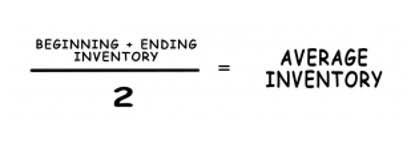The Ultimate Guide for Recording Journal Entries In Accounting

Any errors here can lead to mistakes in all of the future steps. All the business transactions that are recorded will firstly go to the journal. That is why sometimes the journal is called “the book of original entry”. Journal entry is the process of recording the business transaction in the journal. It is the first entry that the business transaction from the real world is recorded into the accounting system. The HighRadius Record to Report solution improves accounting by contribution margin introducing automation to the forefront, dramatically increasing efficiency and accuracy.

Journal Entry for Bad Debts
- Common misconceptions may arise when people mistakenly believe that debits always represent negative amounts or that credits are always positive.
- ‘Debit’ (Dr.) and ‘Credit’ (Cr,) are the two terms or signs used to denote the financial effect of any transaction.
- Journal entries are the very first step in the accounting cycle.
- This isposted to the Service Revenue T-account on the credit side.
- At the same time, Deskera lets you integrate directly with your business bank account.
Now that all the end of the year adjustments are made and the adjusted trial balance matches the subsidiary accounts, financial statements can be prepared. After financial statements are published and released to the public, the company can close its books for the Insurance Accounting period. Closing entries are made and posted to the post closing trial balance. In the journal entry, Accounts Receivable has a debit of $5,500.This is posted to the Accounts Receivable T-account on the debitside. This isposted to the Service Revenue T-account on the credit side.
Slavery Statement
In this guide, you’ll learn the different types of journal entries, why they matter, and how to create and record them. Proper tracking of journal entries is crucial for accurate financial reporting for any business. Single-entry bookkeeping is an accounting system where transactions are recorded through one entry only. However, this type of recordkeeping isn’t convenient for larger trading or manufacturing companies. As such, they need separate special journals to record specific routine transactions quickly. To view the details of each journal entry, you can press on the expand all records button.

Common mistakes to avoid when recording journal entries

To record a payment as a journal entry, you note a debit to your accounts payable, showing your debt has decreased. The money leaving your cash account is recorded as a credit, showing the bill has been paid. Adjusting entries are used when you need to change entries you’ve already recorded. They make sure the transactions match the correct accounting period. You might need to adjust entries if you use accrual accounting and a customer hasn’t paid an invoice.
- A single-column purchase journal is used only for recording credit purchase of merchandise.
- Example Part 1 – Interest income of 2,500 related to the current year is due on the balance sheet date.
- First, let’s dive into the world of debits and credits in assets, liabilities, and equity.
- A compound journal entry always affects more than two accounts.
- Recording of all transactions in one general journal is a time consuming, laborious and troublesome task.
The journal allows the recording of transactions in one place, unlike in a ledger where a single transaction will be recorded separately in different ledger accounts. This results to an easier lookup and analysis of transactions that occurred during a period. However, as mentioned earlier, being familiar with the manual processes of accounting is the best way to learn and appreciate it. That’s why we’re going to start with recording transactions using the accounting journal.

Each example deals with a common business transaction, so you can use this as a reference for how to journalize transactions in the future. The General Journal is the most basic journal and has recording transactions in a journal. also the simplest form since it only contains two columns for debits and credits. This is where you’ll be recording journal entries in a chronological order. However, learning how to create and record a journal entry manually is an effective way for you to understand how the accounting process works even when using a computerized system. It can help you understand how the data you recorded are captured and then processed into a set of financial statements. The journal book must record every business transaction, which means entries need to be made.

最近のコメント